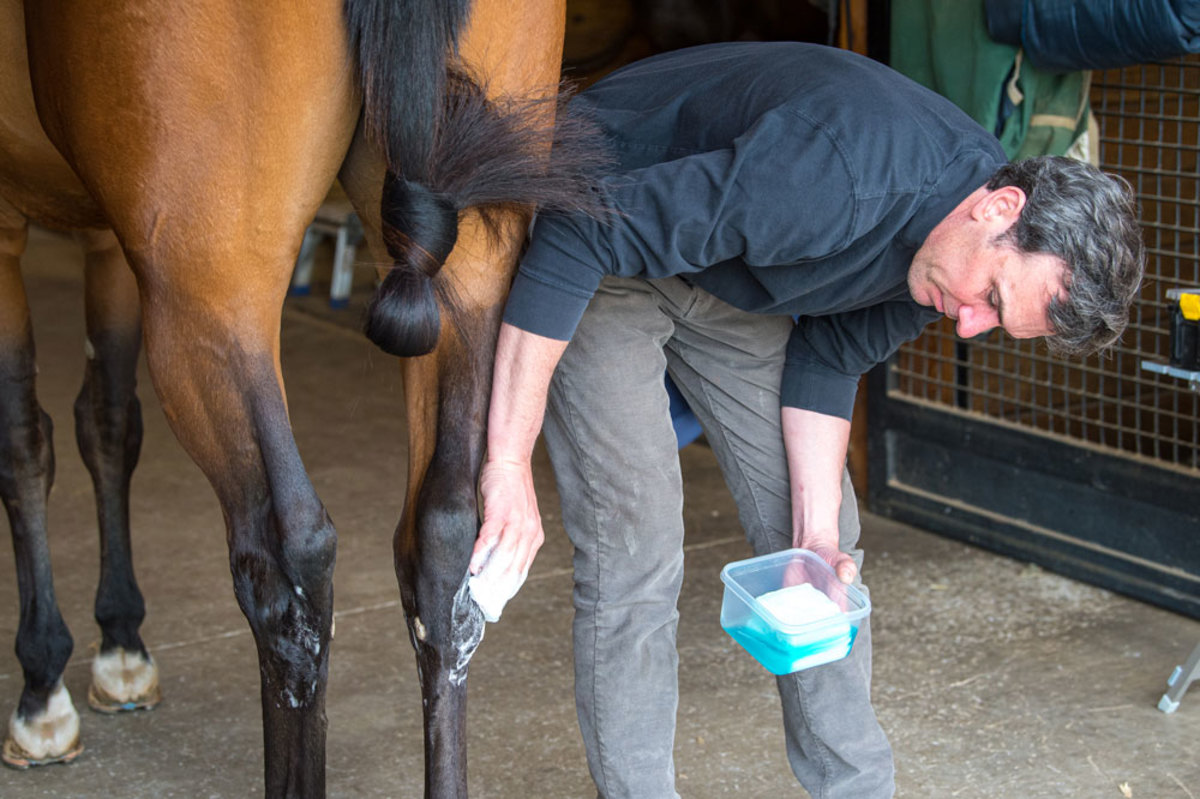
This randomized trial aimed to determine whether ethanol‐based antisepsis reduces bacterial counts on the equine distal limb comparable to a current chlorhexidine scrub method and determine the most effective application technique for the product.
The study was titled, “Comparison of chlorhexidine and alcohol-based antisepsis of the distal limbs of horses” and was authored by Aimie J. Doyle, Matthew E. Saab, Krystina M. Lewis and J. Trenton McClure.
The Study
In total, 41 horses were included, and each horse had a 5 x 5 cm patch clipped over the distal interphalangeal joint of three limbs. By horse, each limb was randomly assigned to a treatment group: 5 minute scrub using 4% chlorhexidine gluconate to a clipped site (CHG); 90 second scrub using 80% ethanol to a clipped site (ETC); 90 second contact with 80% ethanol applied as a spray to a clipped site (ETS); and 90 second scrub using 80% ethanol to an unclipped site (ETUC).
Samples were collected pre‐ and post‐treatment and plated in duplicate. Bacterial counts were log10 transformed and averaged between duplicates. Mean log10 CFU/mL reduction was then compared between groups. The cost of each treatment was determined based on the cost of the consumables and the cost of the technical time required. A cost-benefit analysis was performed by comparing the mean log10 CFU/mL reduction per dollar cost between CHG and each of the ET groups.
There was no significant difference in mean log10 CFU/mL reduction between CHG and ETC in either forelimbs or hind limbs. In forelimbs, there was no significant difference in mean log10 CFU/mL reduction between any groups. In hind limbs, CHG had significantly greater mean log10 CFU/mL reduction than ETUC and ETS. No significant difference in cost‐benefit was found between CHG and ETC. Significant differences were noted between CHG and both ETUC and ETS.
Bottom line: Ethanol-based antisepsis can be used for skin preparation prior to performing immediate, short-duration procedures in horses. A 90-second wet contact time using gauze sponges is recommended. It is important to note that this study did not investigate the efficacy of other alcohol-based antiseptics such as isopropanol or n-propanol.
To access this article visit the BEVA online library on Wiley.com.








